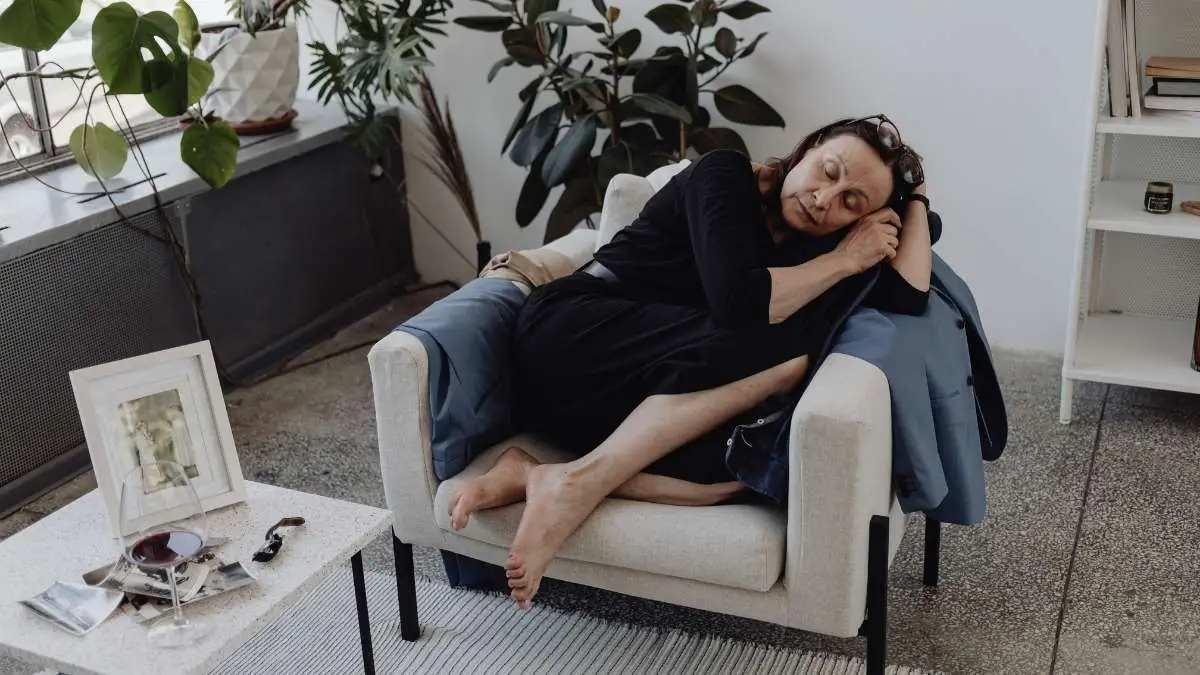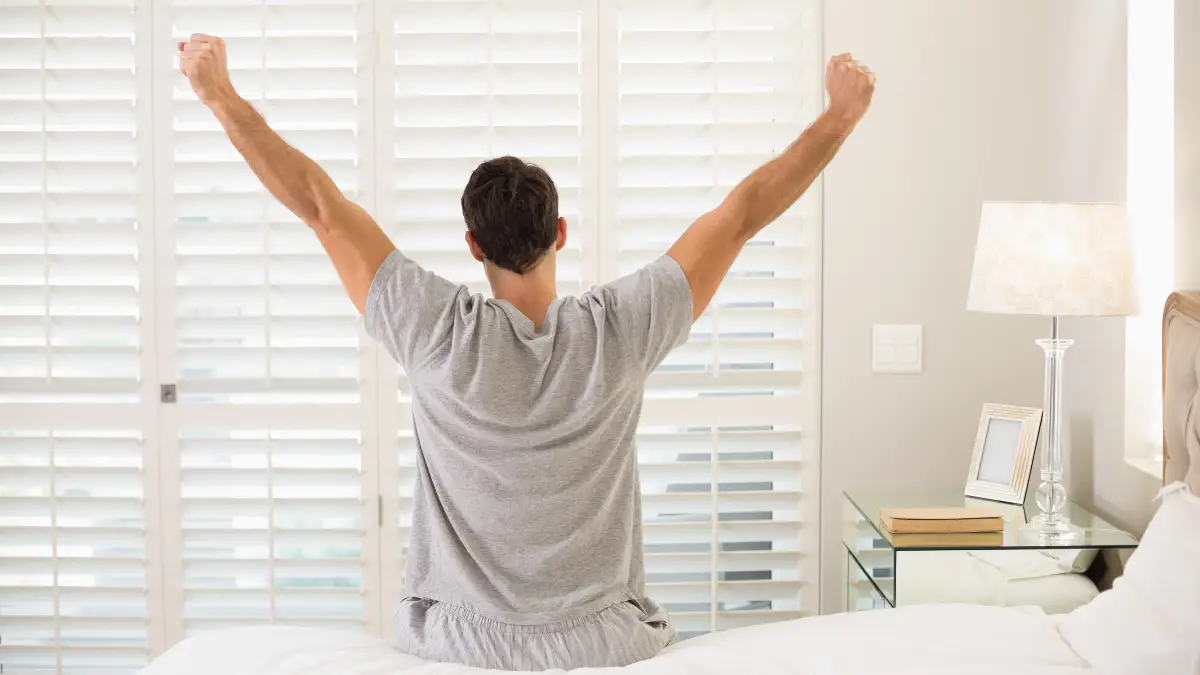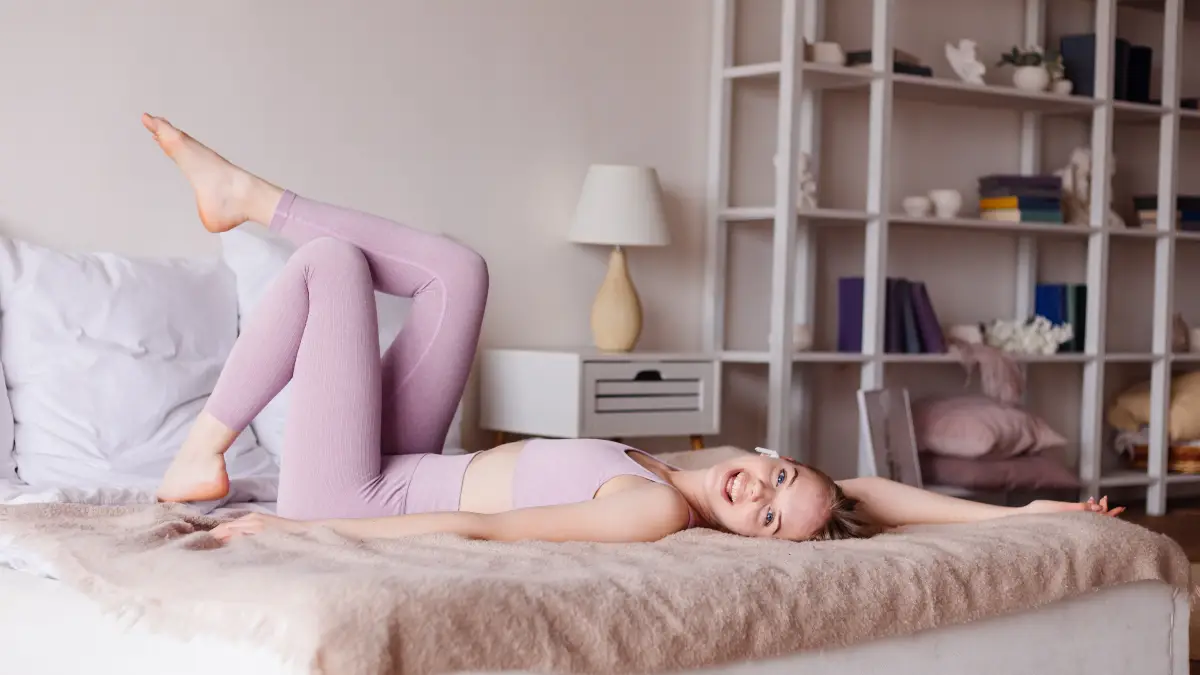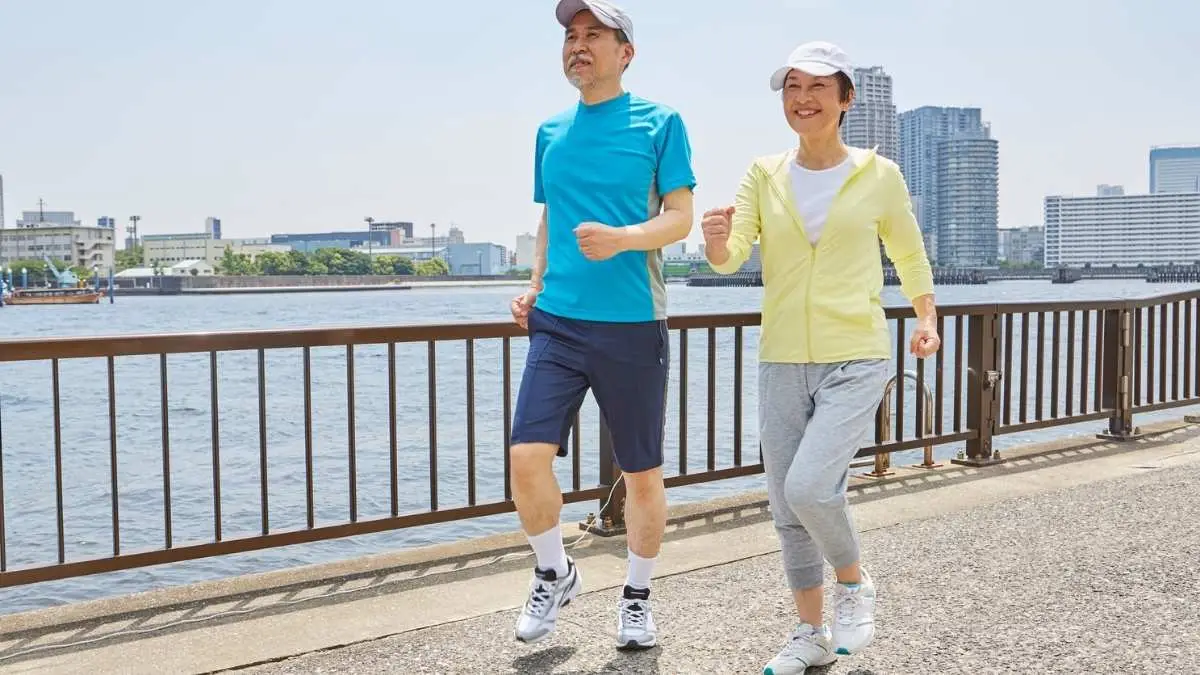You’ve heard “sitting is the new smoking,” but the real problem is you can’t just quit your desk job. So you spend eight hours a day in a chair, feeling your posture slump, your back tighten, and your energy drain away.
You might even hit the gym after work, but that nagging stiffness and the risk of long-term health problems don’t seem to disappear. The damage from sitting all day is real, and it builds up quietly. What if the solution wasn’t another hour at the gym, but a simple, three-minute routine you can do right by your desk?
This guide cuts through the noise and gives you a practical, science-backed plan to fight back against the daily grind, one small break at a time.
What 8 Hours in a Chair Really Does to Your Body

To fix a problem, you first have to know how bad it is. Sitting for a long time isn’t just resting. It’s an active process that harms almost every part of your body. The damage starts small, inside your cells, but it can grow into major health issues.
Your Body’s Engine Shuts Down
The Sedentary Shutdown: What Happens When You Sit
The 1-Hour Plunge
After just one hour of sitting, the activity of LPL (your fat-burning enzyme) in your leg muscles can drop by as much as 90%.
Post-Meal Spikes
Studies show that sitting after a meal causes blood sugar spikes that are 40% higher compared to going for a short, light walk.
Beyond Diabetes
The risk isn’t just diabetes. People with the most sedentary time have a 147% increase in cardiovascular events (like heart attacks) and strokes.
“Sitting is the new smoking.”
When you sit, your body’s engine slows way down. This has big effects on how you handle food and energy.
One of the first things to happen is your body gets worse at controlling blood sugar. Your whole metabolism slows, making it harder to manage blood sugar and blood pressure.
After just a few days of sitting too much, your body can start ignoring insulin, which is a big step toward getting type 2 diabetes.
Your body has an enzyme called Lipoprotein Lipase (LPL). Think of it as a fat-grabber. It pulls fat out of your blood to be used for energy.
When you move, LPL works great. But when you sit, LPL in your muscles pretty much stops working. This means more fat and sugar stay in your blood. Your “good” cholesterol (HDL) goes down, too.
This isn’t just a small risk. Studies show that people who sit a lot have a 112% higher risk of getting type 2 diabetes. The simple act of sitting for hours messes with your body’s basic systems and can lead to serious health problems.
How Sitting Wrecks Your Posture and Causes Pain
Your body is built to be balanced. Sitting for a long time throws that balance completely off, which is a major cause of chronic pain. Some people even call this “dead butt syndrome.”
Here’s what goes wrong:
Tight Muscles: The muscles in the front of your hips (hip flexors) and your lower back muscles stay in a short, tight position for hours. They get stiff and overworked.
Weak Muscles: At the same time, your butt muscles (glutes) and deep stomach muscles are stretched out and not being used. Your brain starts to forget how to turn them on. This is called gluteal amnesia, or “dead butt.”
This imbalance makes your pelvis tilt forward. That tilt puts a ton of pressure on the discs in your lower back. This can lead to herniated discs, pinched nerves, and the kind of lower back pain that affects most people at some point in their lives.
The damage doesn’t stop there. The classic desk posture—slumped forward looking at a screen—rounds your upper back and pushes your head forward.
This causes another imbalance: your chest muscles get tight, and the muscles in your upper back get weak. This is a big reason why so many people have constant neck and shoulder pain.
What Sitting Does to Your Heart and Blood Flow
Your heart and blood vessels work best when you are standing and moving. When you sit, your blood circulation slows down, and blood can pool in your legs. This can cause varicose veins or, in serious cases, dangerous blood clots known as Deep Vein Thrombosis (DVT).
The risk to your heart is even scarier. People who sit a lot have a 147% higher risk of having a heart attack or stroke.
Recent research found a clear danger zone. A major 2024 study showed that sitting for more than 10.6 hours a day is linked to a 40-60% greater risk of heart failure and death from heart problems. This study gives us a clear number for when sitting becomes truly dangerous for your heart.
More Hidden Dangers: From Cancer to Brain Fog
The harm from sitting goes even further. It’s linked to a higher risk of getting several types of cancer, including colon, lung, and uterine cancer.
Your brain is affected, too. A lifestyle with too much sitting is linked to a higher risk of anxiety and depression. When you sit for a long time, your brain gets less blood flow. This can make it harder to think clearly and may even increase the long-term risk of dementia.
All these problems are connected. A slow metabolism can lead to weight gain. Extra weight puts more stress on your joints and back, which are already weak from bad posture. This causes pain.
The pain makes you want to move even less, which keeps the cycle going. But if you start to fix one part of the problem—like your posture—it can make it easier and less painful to be active. This, in turn, helps fix the other issues.
Your 3-Minute Fix: A Step-by-Step Guide

The facts about sitting are pretty bad, but you can start to fight back in just three minutes. The routine below is made to directly target the main problems caused by sitting. The idea is simple: move what’s stiff, stretch what’s tight, and wake up what’s weak. You don’t need any equipment, and you can do it anywhere.
Minute 1: Wake Up Your Spine (0:00 – 1:00)

This first minute is all about getting your spine moving after it’s been stuck in one position.
Exercise 1: Seated Cat-Cow (30 seconds)
How to do it: Sit on the edge of your chair with your feet flat on the floor. Put your hands on your knees.
Breathe in: Arch your back, push your belly forward, and lift your chest. Look up slightly.
Breathe out: Round your spine, tuck your chin to your chest, and pull your belly button in.
Flow back and forth between these two moves for 30 seconds.
Why it works: This move gets your spine bending and flexing. It helps get fluid moving between your spinal discs, which get squashed when you sit.
Exercise 2: Seated Spinal Twist (15 seconds per side)
How to do it: Sit up tall on the edge of your chair.
Place your left hand on your right knee and your right hand on the chair behind you.
Breathe in to sit up even taller.
Breathe out and gently twist to the right.
Hold for 15 seconds.
Slowly come back to the center and do the other side.
Why it works: This stretch helps your spine twist, which it doesn’t get to do when you’re sitting still. It releases tension in your back muscles.
Minute 2: Open Your Hips (1:00 – 2:00)

This minute is focused on stretching the muscles in the front of your hips, which get super tight from sitting.
Exercise 3: Kneeling Hip Flexor Stretch (30 seconds per side)
How to do it: Stand up and find a little space.
Step your left foot forward and lower your right knee to the floor (put a towel under it if you need to). Your front knee should be right over your ankle.
Put your hands on your hips and stand up straight.
Gently tuck your tailbone under. This is a small but important move.
Slowly push your hips forward until you feel a stretch in the front of your right hip.
For a deeper stretch, raise your right arm straight up.
Hold for 30 seconds. Don’t bounce.
Switch legs and repeat.
Why it works: This is the best way to undo the damage of tight hip flexors. Stretching these muscles helps fix the forward pelvic tilt that causes so much lower back pain.
Minute 3: Turn On Your Backside (2:00 – 3:00)

This last minute is for waking up the muscles that get lazy when you sit: your glutes and your upper back.
Exercise 4: Standing Glute Squeezes (30 seconds)
How to do it: Stand with your feet about hip-width apart.
Squeeze your butt muscles as hard as you can.
Hold the squeeze for 2-3 seconds.
Relax completely.
Keep repeating for 30 seconds.
Why it works: This simple move fights “dead butt syndrome.” It reminds your brain how to use these important muscles again.
Exercise 5: Wall Angels (30 seconds)
How to do it: Stand with your back against a wall. Your feet should be a few inches away from it.
Try to keep your lower back, upper back, and head touching the wall.
Raise your arms out to the side and bend your elbows to 90 degrees, like a goalpost. Try to press your arms and the backs of your hands against the wall.
Slowly slide your arms up the wall. Go as high as you can without your back arching or your arms coming off the wall.
Slowly slide them back down, squeezing your shoulder blades together.
Repeat for 30 seconds.
Why it works: This move strengthens the weak muscles in your upper back. It pulls your shoulders back, opens your chest, and fights that forward slump.
How to Build a More Active Life (Beyond the 3 Minutes)

The three-minute routine is a great tool to use throughout your day. But to really fix the long-term damage of sitting, you need to see it as the start of a bigger change. It’s one part of a plan to build a life with more movement.
The “Active Couch Potato” Problem
Here’s a tricky situation many people find themselves in. They might go to the gym for an hour every day, but then they sit for the other 10 hours. They are “active couch potatoes.” And the research is clear: one hour of exercise can’t completely erase the harm from sitting all day.
To fully cancel out the risks of sitting for more than eight hours, you would need about 60 to 75 minutes of solid exercise every day. Most people don’t get that much. The message is simple: you can’t just out-exercise a day spent in a chair.
The Real Secret: Move a Little, a Lot
The solution isn’t just one big workout. It’s moving often. Your body responds better to small, frequent movements throughout the day.
One study found that the best strategy was taking a five-minute light walk every 30 minutes. This simple habit lowered both blood sugar and blood pressure. This shows that the most important move you can make is your next one. The goal is to constantly break up your sitting time.
This is where the three-minute routine is perfect. Use it for those frequent breaks. Set a timer on your phone to remind you to get up and move every 30 to 60 minutes. This changes your day from long, harmful blocks of sitting to a healthy cycle of work and movement.
Simple Tricks to Move More at Work

The best way to make a change is to build movement right into your day. Make the active choice the easy choice.
- Stand up for phone calls. Make it a rule to stand and walk around during every phone call.
- Have walking meetings. Instead of sitting in a conference room, ask a coworker to walk with you while you talk.
- Always take the stairs. Skip the elevator.
- Walk to talk. Instead of sending an email to a coworker nearby, walk over to their desk.
- Park farther away. Park at the back of the lot or get off the bus one stop early to add a short walk to your day.
This is a different way of thinking. The goal isn’t just to find time for a workout. It’s to build a lifestyle of constant movement.
The three-minute routine isn’t just an exercise. It’s a tool to build good “movement hygiene”—small, regular habits that prevent long-term damage and keep your whole body healthy.


